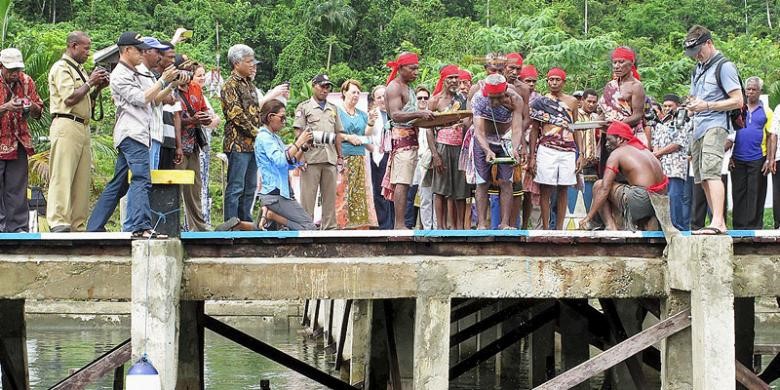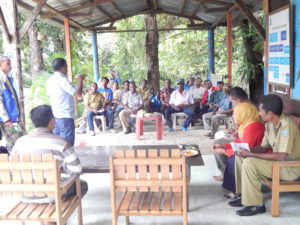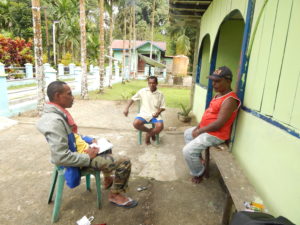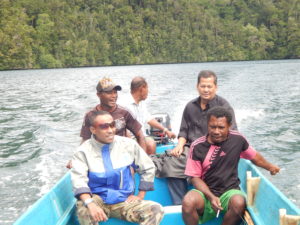
17 Oct Marine Protected Areas and Indigenous Institutions: A tale from Indonesia
Information in this post was provided by CCRN researcher Ahmad Mony
Mayalibit Bay is a giant lagoon situated in the eastern part of Waigeo Island, West Papua Province, Indonesia. This area is inhabited by the indigenous people of the Maya tribe, who inhabit 12 villages spread throughout two sub-districts known as Teluk Mayalibit and Tiplol Mayalibit. The waters of Mayalibit Bay have been established as a Marine Conservation Area within the Raja Ampat KKPD Network, through the Minister of Marine Affairs and Fisheries Decree No. 36/KEPMEN-KP/2014, with an area of 53,100 hectares.
The establishment of Mayalibit Bay as a conservation area would not have been possible without the assistance of several NGOs, including Conservation International Indonesia (CI Indonesia) and RARE Indonesia. The Maya tribe that inhabit the 12 villages around the area has supported Mayalibit Bay conservation efforts through the Declaration of Indigenous Fisheries Area (KPA), as well as the ratification of the Maya Customary Council’s Decree (SK) on aspects of regional management.

Figure 1. Activity of Focus Group Discussion with the Indigenous People of Maya tribe
To strengthen the efforts in managing the community-based Mayalibit Bay watershed area, the Sub-Directorate of Customary Law Community of the Ministry of Marine Affairs and Fisheries initiated the strengthening of local institutional capacity. The initial phase of this activity was mapping the customary law relating to the management of coastal resources that exists within the Maya community. This mapping was conducted through three methods: focus group discussion, in-depth interviews, and observation.
The mapping found that the indigenous Maya tribe inhabiting the surrounding waters of Mayalibit Bay were very dependent on coastal resources, especially on the Lema fish (Rastrelliger sp), which is an important commodity in supporting the livelihood system of the society. To preserve this species, the Maya tribe has set a local institution, known as sasi laut, to regulate the use of lema fish by using an open-close system. Currently, this local institution has also been applied to other types of economic biota, such as sea cucumbers, clams, and groupers.

Figure 2. In-depth interview with fishermen of Maya tribe
Based on the mapping and analysis of the local social, cultural, economic, livelihood, and institutional systems of Maya community in the Mayalibit Bay area, Raja Ampat District, there are several conclusions:
- The Maya community inhabiting the bay area is an indigenous and tribal community characterized by a clear history and origin, control over communal agrarian resources, and structure of indigenous institutions in governance and governance of natural resources;
- There are three socio-political pillars that support local governance and governance of natural resources: indigenous council, religious authority, and village administration. These three pillars work in a synergistic and harmonious way to maintain and organize the social, cultural and governance systems;
- Such indigenous institutions governing political and natural resource management as sasi laut are still established verbally, and are vulnerable toward the local socio-political dynamics. Thus, it is necessary to strengthen the institutional capacity to ensure its existence and sustainability;
- The indigenous customary rights claims by the community, whether ethnic, clan, or clan claims, have not been clearly mapped out and could result in potential future conflicts; and,
- The community income systems are still subsistent, requiring assistance from the government and other stakeholders in developing the livelihood system to improve the welfare of the community.

Figure 3. Observation of the waters of Mayalibit Bay with the Head of Customary Warsambin Village
Featured image: Mayalibit Bay community held a custom procession in establishing the indigenous Mayablit Bay fishing area (Photo: kompas.com).


